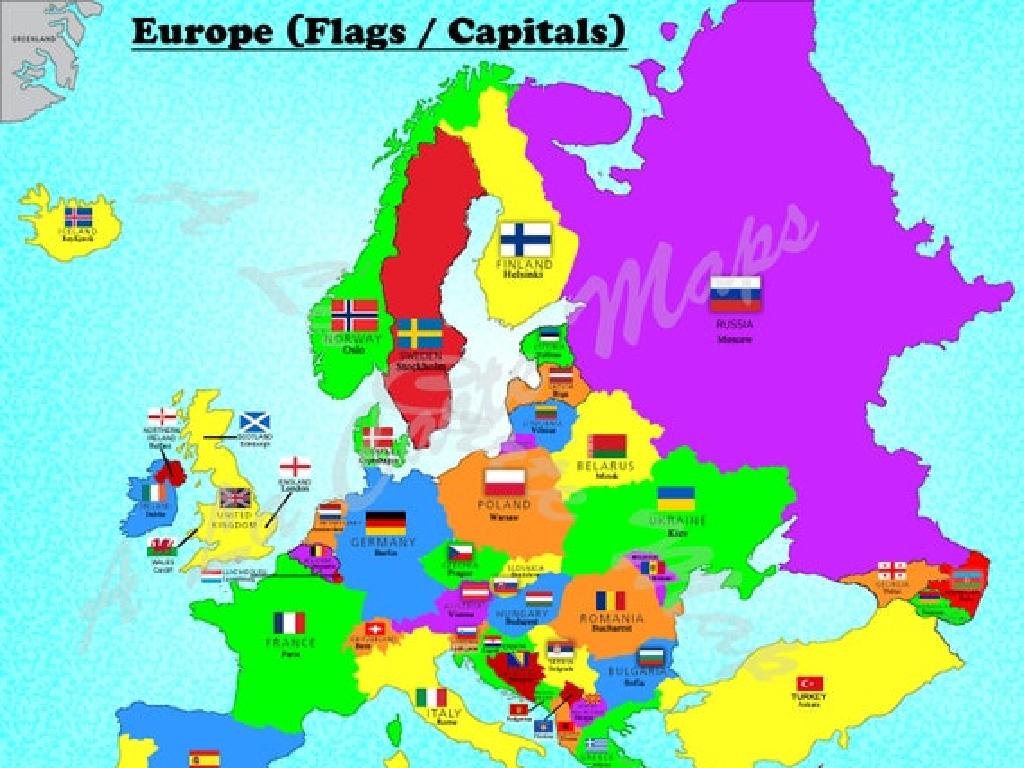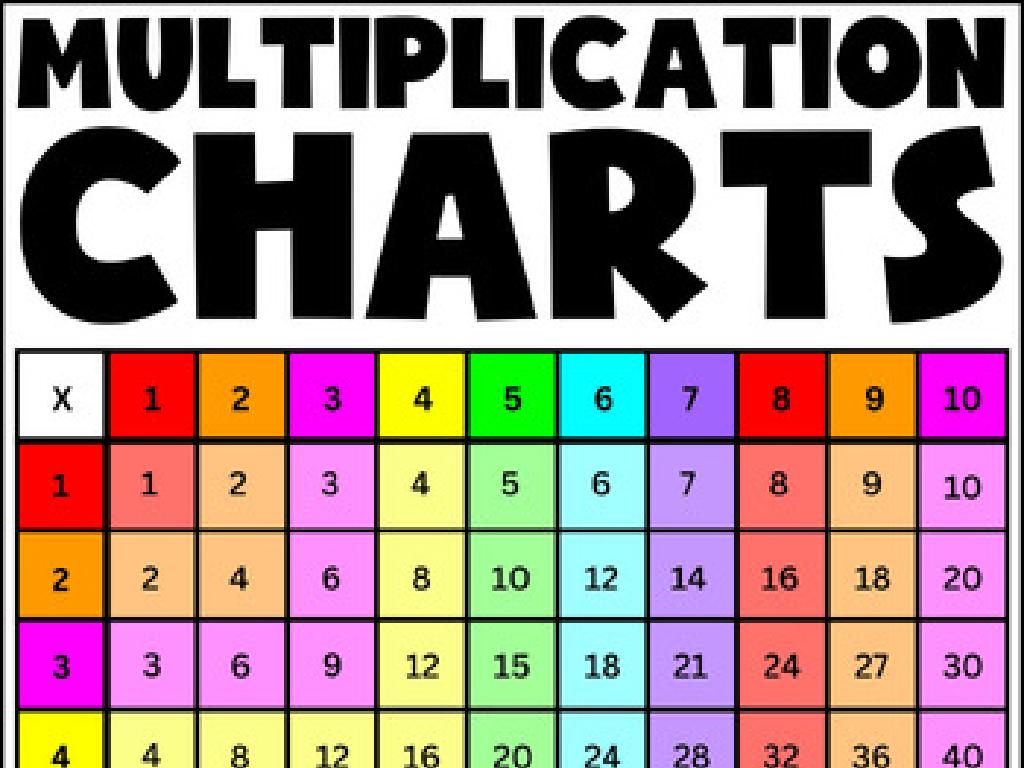The Songhai Empire
Subject: Social studies
Grade: Sixth grade
Topic: African Empires
Please LOG IN to download the presentation. Access is available to registered users only.
View More Content
Exploring The Songhai Empire
– Introduction to African Empires
– Locate Songhai Empire on a map
– Found along the Niger River, in present-day Mali and Niger
– Significance of the Songhai Empire
– A major center of trade, culture, and learning in Africa
– Songhai’s influence on history
– Its legacy includes advancements in law, education, and trade
|
This slide introduces the Songhai Empire, one of the largest and most powerful empires in African history. Begin with a brief overview of African empires to provide context. Then, use a map to show the Songhai Empire’s location, emphasizing its strategic position along the Niger River which facilitated trade and wealth accumulation. Discuss the empire’s historical significance, including its role in the spread of Islam, its sophisticated bureaucracy, and its contributions to education and law. Highlight the importance of Timbuktu as a center of learning. Encourage students to consider the lasting impacts of the Songhai Empire on modern cultures and nations in West Africa.
Rise of the Songhai Empire
– Origins of the Songhai people
– Indigenous to West Africa, along the Niger River.
– Emergence from the Mali Empire
– Songhai grew as Mali weakened, eventually becoming dominant.
– Key leaders of the Empire
– King Sunni Ali and Askia Muhammad were pivotal leaders.
– Expansion and prosperity
|
The Songhai Empire’s rise is a significant part of African history, marking the era of one of the largest empires in African history. The Songhai people originated along the Niger River and were well-established long before their empire’s rise. As the Mali Empire began to decline, the Songhai Empire emerged to prominence under the leadership of formidable rulers such as Sunni Ali, who expanded the empire through military conquests, and Askia Muhammad, who established efficient administrative systems and promoted Islam. This slide will explore the origins, key leaders, and the factors that contributed to the Songhai Empire’s growth and prosperity. Encourage students to consider the impact of geography on the development of civilizations and the role of leadership in the success of empires.
Culture and Society of the Songhai Empire
– Social structure of Songhai
– Songhai society was hierarchical with a king, nobles, traders, and farmers.
– Influence of religion and education
– Islam played a key role; Timbuktu was a center of Islamic learning.
– Songhai’s trade and economy
– Trade routes connected Songhai to Europe and Asia, exporting gold, salt, and slaves.
|
This slide aims to give students an understanding of the Songhai Empire’s culture and society. Discuss the hierarchical social structure, emphasizing the roles of different classes from the king to the common farmers. Highlight the significance of Islam in the empire, particularly how it influenced education with Timbuktu being a renowned center of learning. Explain the empire’s economy, focusing on the trade routes that made Songhai prosperous, and the goods that were commonly traded. Encourage students to think about how religion, education, and economy shape a society and compare it to their own experiences.
The Golden Age of the Songhai Empire
– Askia the Great’s reign
– A time of peace and leadership strength
– Expansion and prosperity
– Songhai grew wealthy and powerful, controlling trade routes
– Boost in learning and trade
– Timbuktu became a center of learning, attracting scholars
– Cultural contributions
– Songhai art, music, and architecture flourished
|
This slide highlights the zenith of the Songhai Empire during the rule of Askia the Great. Students should understand how his leadership contributed to a period of stability and growth. Emphasize the empire’s expansion and how it became a hub of trans-Saharan trade, leading to immense prosperity. Highlight the significance of Timbuktu as an intellectual center of the Muslim world, with its universities and libraries. Discuss the empire’s rich cultural heritage, including its influence on art, music, and architecture. Encourage students to think about how the achievements of the Songhai Empire during the Golden Age have had a lasting impact on West African culture.
The Fall of the Songhai Empire
– Factors leading to decline
– Internal strife, leadership issues, and external pressures
– The Moroccan invasion
– In 1591, Moroccan forces invaded, seeking wealth
– Battle of Tondibi
– Songhai’s defeat at Tondibi marked the empire’s collapse
– Empire’s aftermath and legacy
– Despite its fall, Songhai’s cultural and academic contributions endure
|
This slide examines the decline of the Songhai Empire, once a powerful state in West Africa. Discuss the various internal and external factors that contributed to the empire’s weakening, such as political instability and economic challenges. Highlight the pivotal moment in 1591 when Moroccan forces, armed with gunpowder weapons, invaded the empire, seeking control over its rich resources. The Battle of Tondibi was a decisive conflict where the Songhai forces were defeated, leading to the empire’s eventual collapse. Conclude by reflecting on the lasting impact of the Songhai Empire, including its contributions to African culture, education, and trade, which continued to influence the region long after its decline. Encourage students to think about how empires can have enduring legacies that outlive their political power.
The Songhai Empire’s Enduring Legacy
– Lasting impact on West Africa
– Songhai’s legal and trade systems still influence West Africa.
– Influence on modern culture
– Elements of Songhai music, art, and language persist today.
– Songhai’s societal contributions
– Songhai introduced advanced education and governance.
– Preserving Songhai’s heritage
– Efforts to protect historical sites and educate about Songhai.
|
The Songhai Empire, once a dominant force in West Africa, has left a profound legacy that is still evident today. Its sophisticated systems of law and trade have shaped the region’s development. Modern culture, including music, art, and language, retains traces of Songhai influence, showcasing the empire’s rich heritage. Songhai’s contributions to society, particularly in education and governance, set precedents for future civilizations. Current efforts to preserve Songhai history and heritage are crucial in keeping the empire’s memory alive and ensuring that its achievements continue to be recognized and studied. Encourage students to reflect on how ancient civilizations like the Songhai Empire can have a lasting impact on the world we live in today.
Class Activity: Create Your Empire
– Divide into groups, pick an empire location
– Decide your empire’s social structure
– Think about roles like leader, farmers, traders
– Create your empire’s culture
– What traditions or beliefs does your empire have?
– Plan a presentation on empire’s history
– Include key events that lead to prosperity and decline
|
This activity is designed to engage students with the concept of empire-building by allowing them to create their own. In groups, students will choose a location for their empire, considering factors like resources, geography, and climate. They will then decide on a social structure, discussing different roles within their empire and how people interact. Culture is another aspect they will create, including language, religion, and traditions. Finally, each group will prepare a short presentation on their empire’s rise to prosperity and eventual fall, considering factors like leadership, economy, and conflicts. Provide guidance on historical examples, encourage creativity, and ensure each group understands the assignment’s objectives. Offer a variety of materials and resources for research and presentation preparation.






